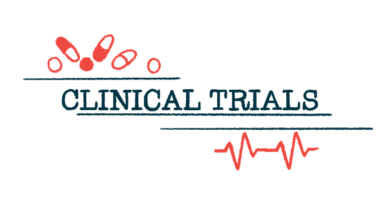Hepatitis B gene-editing therapy PBGENE-HBV shows early promise
Three patients have received single administration in Phase 1 ELIMINATE study

A single dose of Precision BioSciences’ investigational gene-editing therapy PBGENE-HBV was well tolerated and showed early signs of antiviral activity among three adults with chronic hepatitis B in a Phase 1 clinical trial.
The patients, who received the lowest dose to be tested in the Phase 1 ELIMINATE-B study (NCT06680232), will now receive two more administrations of PBGENE-HBV at this dose, while others will start at a higher dose. Precision BioSciences plans to share additional trial data throughout the year.
ELIMINATE-B opened in November and Precision reported it had fully enrolled the first dosing group within a month. The study is still actively recruiting up to 45 participants at sites in Moldova, Hong Kong, and New Zealand. There are plans to expand the trial into the U.S. and U.K.
“We are proud to share this first in human proof-of-concept data with the Hepatitis B community as we plan additional administrations at this dose level and escalating dose levels,” Murray A. Abramson, MD, Precision’s head of clinical development, said in a company press release.
Alina Jucov, MD, PhD, principal investigator for the trial at the Arensia Research Clinic in Moldova, added: “The ELIMINATE-B global investigators are enthusiastic about the initial safety and activity profile of PBGENE-HBV, and look forward to treating additional patients globally.”
In hepatitis B, liver inflammation is caused by an infection with the hepatitis B virus (HBV). When these infections don’t clear up on their own and become chronic — lasting for six months or more — there’s a risk of serious liver damage.
Antiviral therapies are available for hepatitis B and, while they lower circulating levels of the virus, they can’t completely stop it from replicating its DNA and usually have to be taken for life to keep the virus suppressed.
When HBV enters liver cells, it forms rings of genetic material called covalently closed circular DNA (cccDNA) that are used as a template to make more of the virus. HBV can also directly integrate its genetic material into liver cells’ own DNA, which allows for the continuous production of viral proteins that help it survive.
How is PBGENE-HBV supposed to work in hepatitis B?
PBGENE-HBV is designed to lead to a functional cure for chronic hepatitis B where the virus is no longer actively replicating and treatment can be stopped. It makes cuts in HBV DNA that simultaneously inactivate integrated HBV DNA and cause cccDNA to be degraded, which Precision believes will be able to suppress the infection to the point of a functional cure.
The gene-editing materials needed to make these cuts are packaged into fatty molecules called lipid nanoparticles that help deliver them to infected liver cells.
The two-part Phase 1 ELIMINATE-B study is designed to evaluate PBGENE-HBV’s safety, tolerability, movement into, through, and out of the body, that is, its pharmacokinetics, and antiviral activity in adults, ages 18-70, with chronic hepatitis B infections.
Participants must be on stable regimens of antiviral therapies and test negative for HBeAg, a viral protein that indicates HBV is actively replicating.
In its first part, three different dose levels of PBGENE-HBV are being sequentially tested in three to six patients at each dose level. Each person may receive up to three administrations at their assigned dose, given eight weeks apart. The optimal dose identified in this first part will then be tested in a higher number of patients in the study’s second, dose-expansion phase.
Results of first administration
The update comes from the first group of three patients who’ve so far received a single administration of PBGENE-HBV at its lowest dose (0.2 mg/kg). The patients differed regarding their age at infection, infection duration, and blood levels of HBsAg, an HBV protein critical for the virus’ ability to infect cells and that can be used as an indicator of disease activity.
All three patients tolerated the treatment well, with no serious adverse events reported, according to the company. Moreover, there were early signs of antiviral activity, with two patients seeing a substantial reduction in blood HBsAg levels.
“The early data in the first [group] of patients is consistent with the safety and HBsAg reductions observed in our preclinical models,” said Cassie Gorsuch, PhD, chief scientific officer at Precision. “PBGENE-HBV is doing what no previous treatment has been able to accomplish, eliminating the source of viral replication in cccDNA and inactivating integrated disease.”
Given the positive safety data, these three patients can now receive two more administrations of the therapy. The treatment of a new group at the next highest dose can also begin.
“These data excite the entire Precision team, and we hope it instills confidence among the patients who are courageously embarking in our clinical trial,” said Michael Amoroso, Precision’s president and CEO. “Progress against this widespread and devastating disease would not be possible without their participation.”







